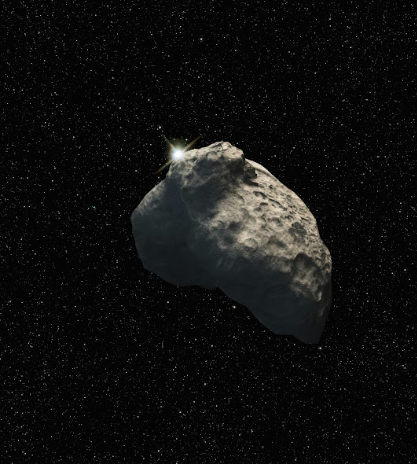
A brand new “mini-moon” entered the night sky around planet Earth and will stay for around two months.
Sept. 29 marked the date of the entry of “2024 PT5” into orbit around Earth. “2024 PT5” is the informal name of the new “mini-moon” which came from the Arjuna asteroid belt.The Arjuna asteroid belt is one of the closest celestial objects to Earth, meaning that our planet interacts with it relatively frequently on a cosmic scale. For a space object to qualify as a “mini-moon,”, it has to orbit Earth at a distance 2.8 million miles from the surface and at a speed around 2,200 mph.
This mini-moon is different from generic space junk in the atmosphere and other similar events from the past because it is an already notable cosmic object that only stays in orbit around earth for a limited period of time.
While mini-moon events occur with some regularity on a cosmic scale, they are still quite uncommon. While there have been multiple recent ones, in both 2020 and 2022, the most recent ones that precede them were in 2006, 1991 and 1981.
Unlike large outer space eventsー like solar and lunar eclipses ー which scientists can predict long ahead of time, these mini-moon events are discovered on quite a short notice. Scientists only learned of 2024 PT5 less than 2 months prior on Aug. 7 using Asteroid Terrestrial-impact Last Alert System (ATLAS) during routine monitoring for potentially dangerous space objects.
This mini-moon event is also notable due to its size. While it is quite a small object, it is one of the largest mini-moon objects ever recorded. 2024 PT5 stands at only around 37 feet wide, about the size of a bus.
“Unfortunately it is too small to be seen with the naked eye,” said physics teacher and astronomy club advisor Ian Spangenberg. “It will be visible using a powerful enough telescope,” he added.
Scientists think that this asteroid’s orbit around Earth is part of a larger orbital pattern, and that the same asteroid has become a mini-moon before and will likely again around 2055.
“[The Pleasant Valley Astronomy Club] has an Astronomy Night scheduled at St Ambrose University’s Menke Observatory during the time the mini-moon will be orbiting Earth,” said Spangenberg. “We will do our best to spot it in the night sky.”
All PV students have the opportunity to go and try to see this cosmic object in the sky. “I can’t wait to try to see the mini-moon with the astronomy club,” said senior Aayush Deshpande.
With this unique object in the night sky for the next two months, it is the perfect time to take out a telescope on a clear night and look for the mini-moon!








